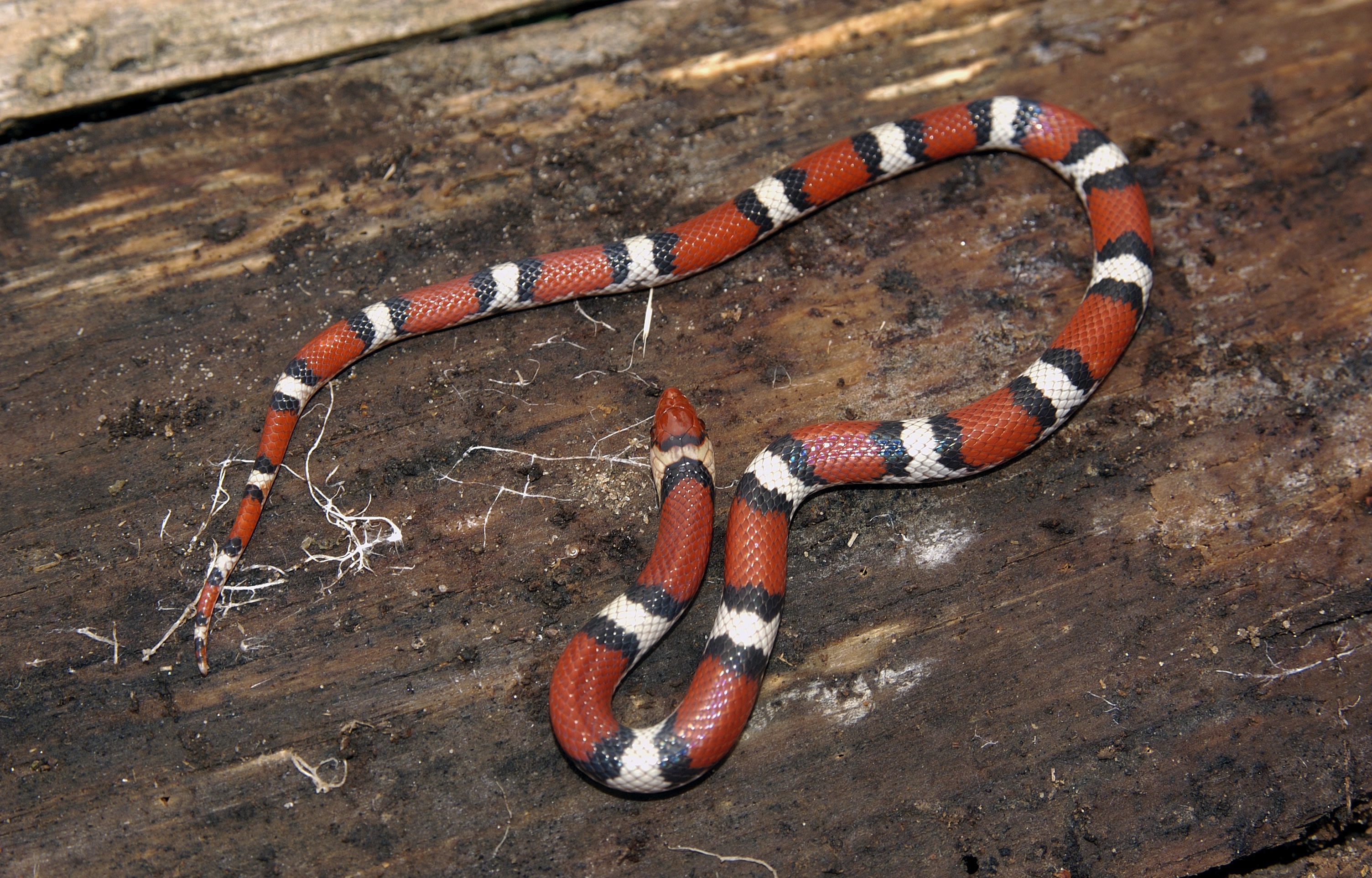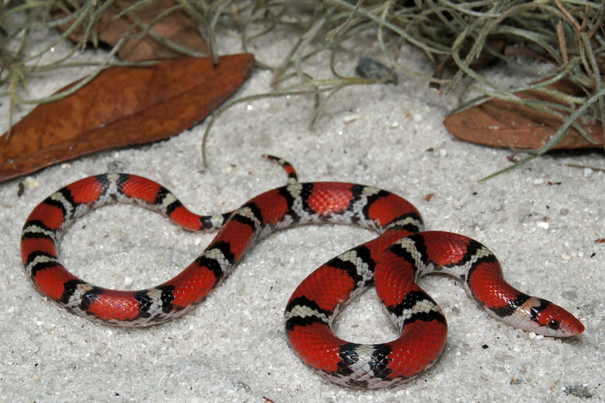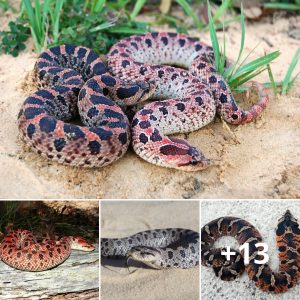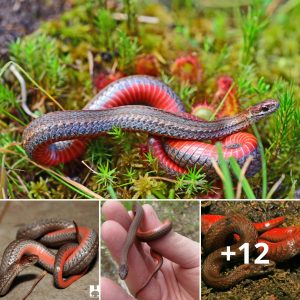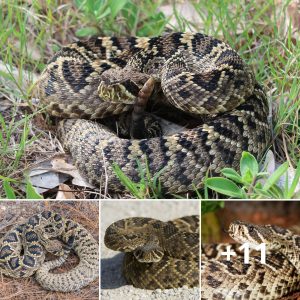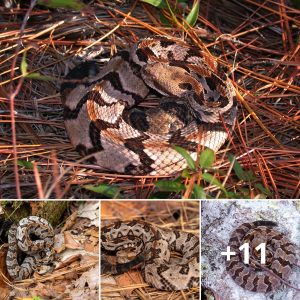Exploring the Enigmatic Beauty of the Scarlet Snake: A Closer Look at its Vivid Colors and Mysterious Traits

Cemophora coccinea
Description: The scarlet snake is slender with smooth scales and has a striking color pattern which closely resembles the venomous coral snake—banded red, black, and yellow (or white). However, one can easily distinguish scarlet snakes from coral snakes because they have black bands that separate their wide red bands from their yellow bands. Their unmarked bellies are white or yellowish, which distinguishes them from scarlet kingsnakes. Their pointed, red snouts are used for burrowing.
Feeding/Diet: Scarlet snakes spend most of their time below ground, searching for reptile eggs, their primary food. They will also eat small snakes and lizards.
Habitat/Range: They inhabit oak and pine forests with sandy soil, where they can burrow easily.
Reproduction: Scarlet snakes lay 3–8 eggs during mid summer, and the babies closely resemble the adults.
Miscellaneous: Scarlet snakes emerge from hibernation in late spring and are active only at night. They generally do not bite when handled, but because of their resemblance to the venomous coral snake, only experts in snake identification should pick one up.

